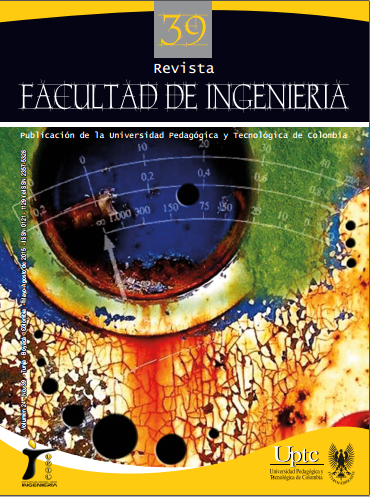Testing process for small software development organizations

Abstract
Define a testing process in an organization can be valuable to the extent that it allows to: (i) increase product quality, (ii) facilitate the understanding and communication between team members, (iii) support the process improvement in a manner continous, (iv) and support the tasks' automatic execution. In this sense, this paper proposes a light weight process defined to guide and support the test process in small software development organizations. The proposed process incorporates functional testing techniques in order to setting the activities required to evaluate the software product's functionality from an organized and systematic manner, especially those having to do with the design and execution of tests. This process has been defined from the analysis of: (i) few existing testing process reference models, and (ii) different studies reviewed of the literature. This process has been successful used in a small software development company answer have observed that it can be useful and practical to perform tests of software product in this type of companies.Keywords
testing process, functional testing techniques, small software development organizations
References
- C. Garcia, A. Dávila, and M. Pessoa, "Test process models: Systematic literature review," in Communications in Computer and Information Science vol. 477, ed, 2014, pp. 84-93.
- J. Kasurinen, "Elaborating Software Test Processes and Strategies," in Third International Conference on Software Testing, Verification and Validation (ICST), Paris, France, 2010, pp. 355-358; doi: 10.1109/ICST.2010.25.
- K. Heshusius Rodríguez, "Colombia: desafíos de una industria en formación," in Desafíos y oportunidades de la industria del software en América Latina, CEPAL, Ed., ed Colombia: MayolEdiciones, 2009, pp. 139-170.
- ISO, "ISO/IEC 29110. Software engineering — Lifecycle profiles for Very Small Entities (VSEs)," International Organization for Standardization, Genova2011.
- C. Valencia Pinzón, "Las TIC, pieza clave para resolver problemas de competitividad nacional," Universidad Militar Nueva Granada (http://hdl.handle.net/10654/7594), Colombia2012.
- P. Bastos Tigre and F. Silveira Marques, "América Latina en la industria global de software y servicios: una visión de conjunto," in Desafíos y oportunidades de la industria del software en América Latina, CEPAL, Ed., ed Colombia: MayolEdiciones, 2009, pp. 249-292.
- P. Clarke and R. V. O'Connor, "An empirical examination of the extent of software process improvement in software SMEs," Journal of Software: Evolution and Process, vol. 25, pp. 981-998, 2013.
- J. Kasurinen, O. Taipale, and K. Smolander, "How Test Organizations Adopt New Testing Practices and Methods?," in Software Testing, Verification and Validation Workshops (ICSTW), 2011 IEEE Fourth International Conference on, 2011, pp. 553-558.
- M. Piattini, F. García, I. García Rodriguez, and F. Pino, Calidad de Sistemas de Información. Tercera edición, Segunda Edición ed. Madrid: Rama, 2014.
- A. Fuggetta, "Software process: a roadmap," in International Conference on Software Engineering (ICSE), Limerick. Ireland, 2000, pp. 25-34.
- W. Humphrey, "Acquiring Quality Software," CrossTalk The Journal of Defense Software Engineering, vol. 18, pp. 19-23, 2005.
- C. Fernández and M. Piattini, Modelo para el gobierno de las TIC basado en las normas ISO. Madrid, España: AENORediciones, 2012.
- ISO, "ISO/IEC 12207:2008 Systems and software engineering - Software life cycle processes.," International Organization for Standardization, Geneva2008.
- SEI, "CMMI for Develpment, Version 1.3. Technical Report CMU/SEI-2010-TR-033 ESC-TR-2010-033," Software Engineering Institute (SEI), Pittsburgh2010.
- H. Oktaba, M. Piattini, F. Pino, M. J. Orozco, and C. Alquicira, COMPETISOFT: Mejora de Procesos Software para Pequeñas y Medianas Empresas y Proyectos. Madrid: Ra-Ma, 2008.
- ISO, "ISO/IEC/IEEE 29119: Software and systems engineering -- Software testing (Parts 1, 2, 3, 4 and 5)," International Organization for Standardization, Geneva2013.
- E. v. Veenendaal, R. Hendriks, J. v. d. Laar, and B. Bouwers, "Test Process Improvement using TMMi," The Magazine for Professional Testers, vol. September, pp. 21-25, 2008.
- J. Andersin, "TPI – a model for Test Process Improvement " Department of Computer Science, University of Helsinki (http://www.cs.helsinki.fi/u/paakki/Andersin.pdf), Helsinki2004.
- E. J. V. Tanja, J. Sánchez Sánchez, and M. Mannise, "Mejorando el testeo en las Pyme ¿Cómo empezar?," in V Jornadas sobre Testeo de Software, Valencia, España, 2008, pp. 71-80.
- D. Karlström, P. Runeson, and S. Norden, "A minimal test practice framework for emerging software organizations," Software Testing, Verification and Reliability, vol. 15, pp. 145-166, 2005.
- ISO, "ISO/IEC/IEEE 29119: Software and systems engineering -- Software testing -- Part 2: Test processes," International Organization for Standardization, Geneva2013.
- P. Cruz, R. Villarroel, F. Mancilla, and M. Visconti, "A Software Testing process for the reference model of Competisoft," in Chilean Computer Science Society (SCCC), 2010 XXIX International Conference of the, 2010, pp. 51-59.
- A. Sanz, J. Saldaña, J. García, and D. Gaitero, "TestPAI: A proposal for a testing process area integrated with CMMI," European Systems and Software Process Improvement and Innovation (EuroSPI 2008), Dublin, Ireland, 2008.
- A. Rodrigues, P. R. Pinheiro, and A. Albuquerque, "The definiton of a testing process to small-sized companies: the Brazilian scenario," in Quality of Information and Communications Technology (QUATIC), 2010 Seventh International Conference on the, 2010, pp. 298-303.
- M. Rojas, "Proceso de pruebas pequeñas organizaciones desarrolladoras de software " Ingeniería de Sistemas Tesis de pregrado, Departamento de Sistemas, Universidad del Cauca, Popayán, 2013.
- R. K. Yin, Case Study Research: Design and Methods. Newbury Park: Sage Publications, 2003.
Downloads
Download data is not yet available.